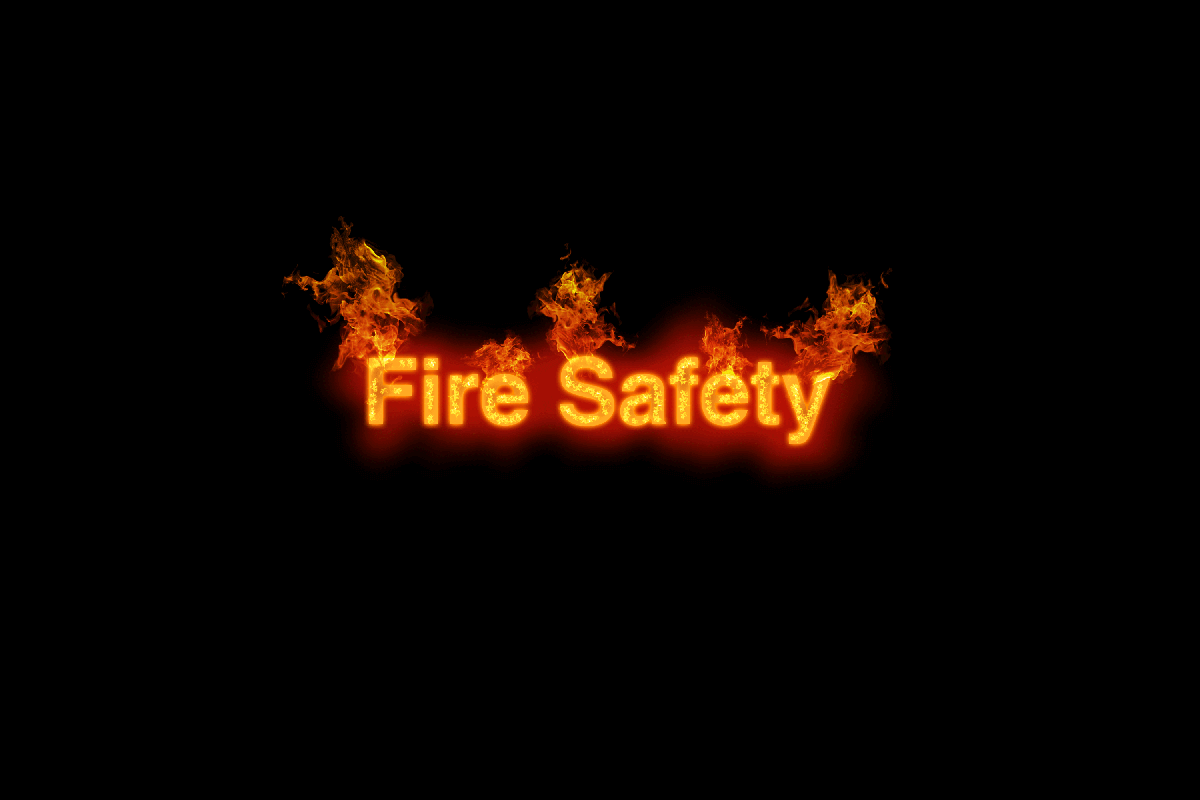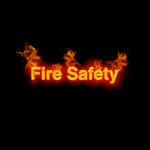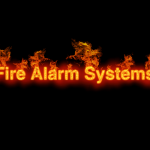The potential of a fire outbreak is an inherent risk in any commercial or residential property. Given that fires can lead to massive loss of life, health complications, and property loss, the UK property has put in place stringent regulations designed to ensure safety for people living on all types of properties.
Ensuring the safety of residents in case of a fire can be a daunting task, even in the best circumstances. When the residents in question have vulnerabilities, ensuring that an emergency evacuation takes place and no massive damage to property can be extremely challenging.
Suppose you run a care facility that houses people considered vulnerable under the law, such as the elderly, sick, young people, people who have special needs or people who are battling addiction. In that case, you have a duty to ensure that your care premises are a safe habitat. Apart from creating a safe living environment, this also means instituting the necessary fire safety regulations.
Contents
What Are the Fire Safety Regulations in Care Homes?
The fire safety regulations for care premises are laws and guidelines that stipulate how the owner/manager of a care home should design and implement an effective fire safety strategy designed to help both the residents and staff stay safe in case of a fire outbreak.
The legal framework for fire safety regulations in care premises found in the UK is based on two laws:
The Care Home Regulations Act (2001)
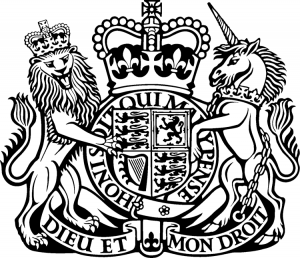 The Care Home Regulations Act (2001), which was amended in 2003, lays down regulations for ensuring fire safety regulations in care homes are met, how care homes should approach fire safety, and how complaints regarding fire safety in a care home should be handled.
The Care Home Regulations Act (2001), which was amended in 2003, lays down regulations for ensuring fire safety regulations in care homes are met, how care homes should approach fire safety, and how complaints regarding fire safety in a care home should be handled.
As the manager or owner of a care facility, there are several key things responsibilities that you should undertake to ensure the person of residents in your care facility under this Act. They include:
- Consulting fire authorities for advice on the best fire safety strategy to implement in your care facility
- To undertake all the necessary precautions to reduce the risk of a fire occurring
- To put in place mechanisms that allow for quick fire detection, containment and extinguishment
- Ensuring regular care and maintenance of all fire safety equipment found in your care facility
- Appointing a trained fire warden for the care home
- Ensuring that your staff have adequate training on how to react in case of a fire outbreak
- Organising fire drills regularly to practice what each individual should do in case of an inferno and then documenting the result of the drills
The Regulatory Reform (Fire Safety) Order 2005
The Regulatory Reform (Fire Safety) Order 2005 is a broad legislation that covers all the essential areas that can help ensure total fire safety in a care home. This law provides detailed guidelines on how to carry out fire assessments, how to detect fires, how to minimise the risk of an outbreak, the training that should be provided to all stakeholders in the care facility, as well as the details on the persons responsible for enforcing this Fire Safety Order.
As a manager or owner of a care home, the law stipulates that you have a strict duty to follow the Fire Safety Regulations for care homes enshrined in both of the legislations above.
Fire authorities in your locality have a right to make regular inspections to ensure that your facility fully complies with these regulations. If your care facility does not conform to these regulations, you can be slapped with hefty fines or even jailed. In some cases, your license to operate a care home can be revoked if you are in breach of these fire safety regulations.
What is the Fire Safety Guidance Document for Care Homes?
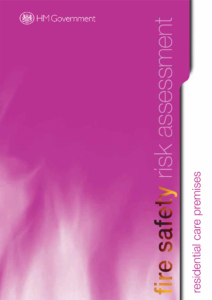 This is a document by the UK Government that provides in-depth details on how to ensure that care premises meet the Fire Safety Order Act (2005). It basically sets out the fire safety strategies that should be employed in care homes in line with the National Fire Safety Standards.
This is a document by the UK Government that provides in-depth details on how to ensure that care premises meet the Fire Safety Order Act (2005). It basically sets out the fire safety strategies that should be employed in care homes in line with the National Fire Safety Standards.
The guide discusses the fire safety duties to be adhered to by the ‘Responsible Person’ and the general fire precautions that should be implemented for maximum fire safety within a care home.
Most importantly, the guide discusses how to carry out a proper fire risk assessment and implement the measures once the assessment is completed.
The fire safety guide for care homes is mostly dedicated to fire risk assessments and the fire safety protocols instituted once the risk assessment is complete. To implement an effective fire safety strategy, you must first understand the potential fire risks in your home.
Generally speaking, the guide covers the following areas:
- How to carry out a proper fire risk assessment
- How to implement precautions against a potential fire outbreak based on the results of an assessment
- Guidance on how to ensure the safety of residents and workers in case of a fire outbreak
- Guidance on how to train employees and other people within the care home on how they should act in case of a fire
- The safety requirements to check for when acquiring fire protection equipment
- How to properly install fire protection gear such as extinguishers
The duty for ensuring that the recommendations provided in the guide are fully met usually rests on the shoulders of the owner or manager of a care facility (Responsible Person).
Who Is Responsible for Ensuring Fire Safety Regulations Are Met in a Care Home?
The person in charge of ensuring that a care facility fully complies with fire safety regulations is known as the ‘Responsible Person’. This may refer to the owner of a care facility, the main employer, or the care facility manager.
As the ‘Responsible Person’ in charge of residents and staff within a care facility, the law stipulates that you should fulfil the following responsibilities to ensure the safety of those under your care in case of a fire:
- Take precautions to ensure the safety of your employees and residents of your facility
- Appoint a fire warden to manage fire safety in your care facility
- Eliminate the use of hazardous materials that can lead to a fire within your facility
- In case any hazardous/flammable substances must be used within the care facility, ensure that the substances are properly used and stored
- Ensure that there the care facility undergoes regular fire assessments
- Ensure that fire drills are carried out
- Ensure that the facility is fitted with fire detection and firefighting equipment
- Ensure that fire detection and firefighting equipment is regularly maintained
- Ensure that residents and staff at the care facility are fully briefed on the fire safety procedures to follow in case of a fire
- Provide training to residents and employees on how to act/react in case of a fire
What Are Some of the Ways You Can Ensure Your Care Home Is Fully Compliant with Fire Safety Regulations?
 Residents of your care facility will likely have mobility issues and other vulnerabilities with their health that may impact how they react in a fire. This means that they may not respond conventionally, however, you can ensure the safety of all the people in your care home by doing the following:
Residents of your care facility will likely have mobility issues and other vulnerabilities with their health that may impact how they react in a fire. This means that they may not respond conventionally, however, you can ensure the safety of all the people in your care home by doing the following:
1. Instituting Periodical Fire Risk Assessments
The law stipulates that fire risk assessments for care homes should be carried out periodically in care facilities. Fire risk assessments usually help in the identification of potential hazards that may lead to a fire. The results obtained in the assessment help in the crafting and implementation of an effective fire safety strategy.
A quality fire risk assessment should involve the following processes:
- Identification of potential fire hazards
- Determination of who is at risk in case of a fire and how their vulnerabilities impact their reaction to the outbreak of a fire
- Determination of the necessary fire precautions that should be instituted
- Recording of the results of the assessment
- A review and update of fire safety protocols on a regular basis
2. Installing Fire Detection Equipment and Alarms
Fire detection equipment usually warns immediately when a fire ignites within a building. In conjunction with fire alarms, it usually provides warning that it is time to institute fire safety protocols.
Given that the residents of a care facility may have vulnerabilities that make it hard to identify some fire detection and safety alarms go off, there are certain steps that you should take when installing this equipment including:
- Training staff and residents on how to identify and/or set different types of alarms
- Installing different types of alarms to cater for people with vulnerabilities such as audio/visual impairments
- Ensuring that the warning systems are loud enough
- Placing fire call points in strategic areas where everyone can easily access them
- Installing fire detectors in high-risk areas
- Testing fire detection equipment monthly, and fire alarms weekly
3. Installing Fire Extinguishers
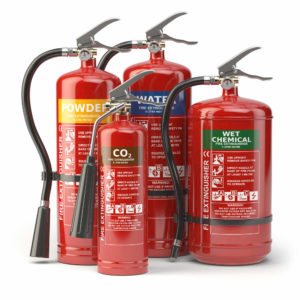 Under the existing fire safety laws for care homes in the UK, you must ensure that your home is fitted with firefighting equipment such as fire hoses and fire extinguishers. Residents and staff can use the firefighting equipment in the facility to curb the spread of a fire before the arrival of firefighters.
Under the existing fire safety laws for care homes in the UK, you must ensure that your home is fitted with firefighting equipment such as fire hoses and fire extinguishers. Residents and staff can use the firefighting equipment in the facility to curb the spread of a fire before the arrival of firefighters.
You should ensure that you only install firefighting equipment that meets the recommended quality assurance standards in your care facility. You should also ensure that your fire extinguishers are serviced and placed strategically within your care facility in locations where all within the facility can easily access them.
Additionally, you should also provide training to residents and staff on how to use the firefighting equipment. This should be followed by periodical fire drills where the presiding fire warden will check if the staff and residents know how to use the firefighting equipment properly.
4. Installing Fire Doors
Fire doors usually help hold back fire and smoke when a fire occurs. This can help your staff and residents safely evacuate from the care facility if a fire starts.
Note that fire doors are only effective when they are closed. It is best to install fires doors in a care facility that are automatically configured to close when your fire detection equipment goes off. Periodic inspection of your fire doors should also take place.
5. Putting Fire Evacuation Protocols in Place
The only way you can ensure the safety of all the people in your care facility in case of a fire outbreak is to ensure that you have solid evacuation plan in place. You should also ensure that you have a fire warden in your care home to advise residents and staff on the evacuation protocols they should follow when there is a fire.
You can ensure that you have effective fire evacuation protocols in your care facility by doing the following:
- Ensuring that all fire escape routes and exits are not obstructed at any time
- Ensuring that you have functional fire safety signs and emergency lighting in your fire escape routes
- Designing personalised emergency evacuation plans based on the vulnerabilities of each resident
- Carrying out fire drills at least once annually
- Training your staff on how to respond to a fire
Lastly, you should also take precautions that can help minimise the risk of a fire occurrence or its spread. Some of the precautionary steps you can take include:
- Ensuring your care facility has a simplistic layout
- Ensuring good housekeeping
- Providing regular training to all in the care facility on how they can ensure fire safety regulations and guidelines are met

